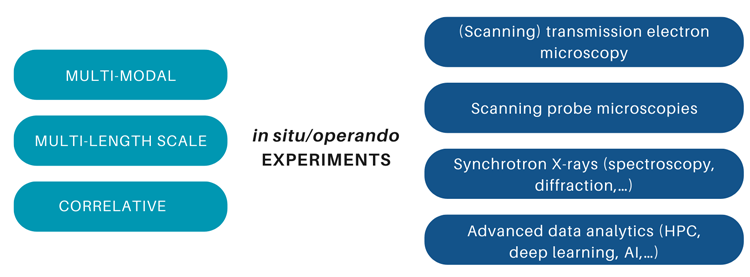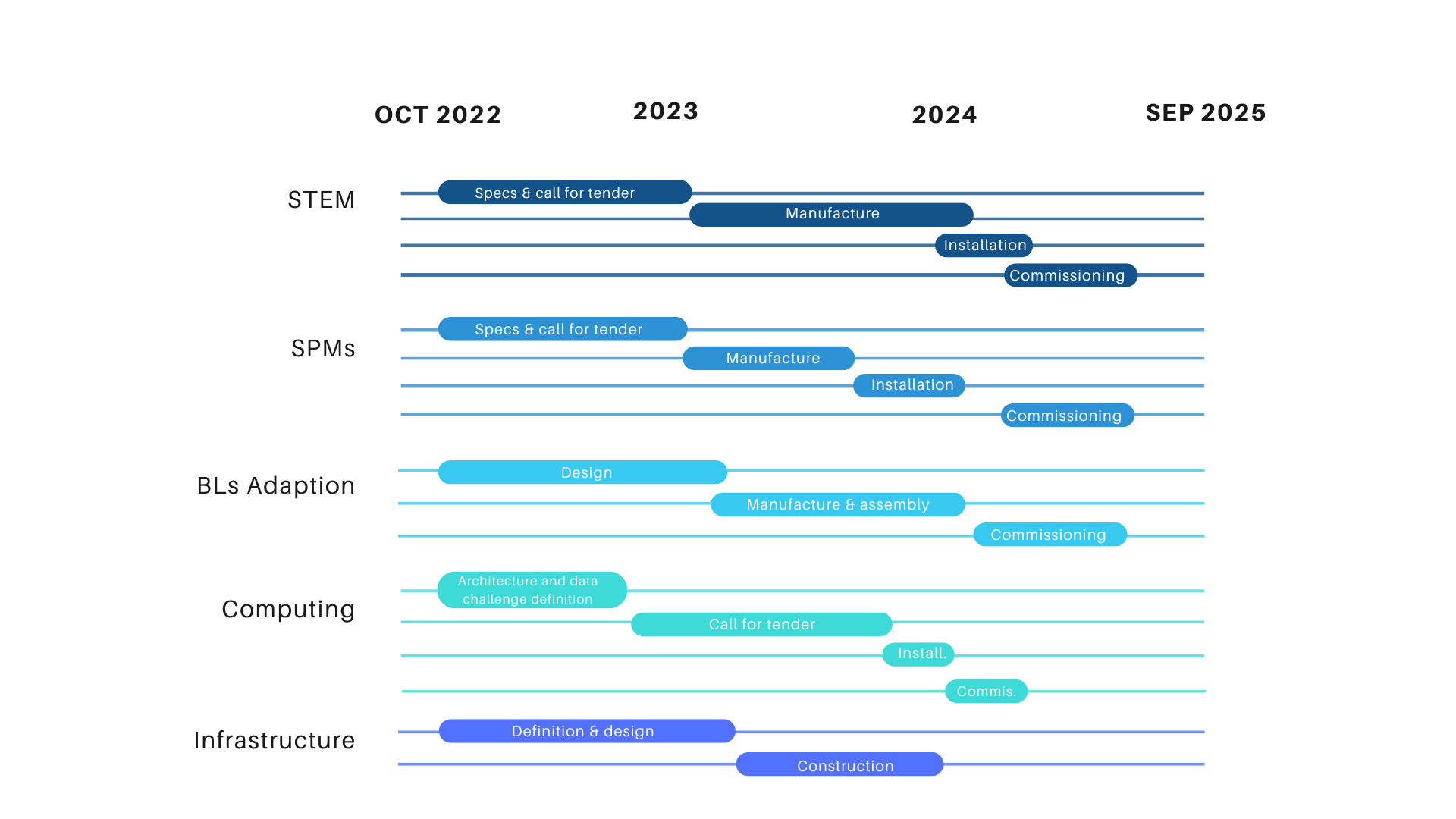InCAEM - In Situ Correlative Facility for Advanced Energy Materials
In-CAEM will develop a singular infrastructure open to all the scientific community for research in advanced energy materials in order to address the scientific challenges of the European Green Deal.
The project started officially in October 2022 and will have the infrastructure ready by mid 2025. It includes new equipment, infrastructure and staff.
It's part of the Planes Complementarios programme, launched and funded by the Ministry of Science and Innovation together with the Generalitat de Catalunya, with the support of NextGeneration EU funds. InCAEM belongs to the Advanced Materials project, aimed at developing new sustainable materials to be used in batteries, electric vehicles or solar cells, among others.
Boosting catalyst science
InCAEM will help to develop next-generation catalysts providing higher selectivity, better energy efficiency and smaller raw material consumption. It will also be key for rational design of novel catalyst classes.
As a multidisciplinary platform, it will generate the technical solutions and integrate the activities of the industry and research communities, moving from basic science to innovation.
Benefits for the scientific community

Compatible operando sample environments for complementary characterization tools together with advanced data analysis will provide excellent opportunities for true multi-modal and multi-length scale characterization of functional materials.
While (S)TEM and scanning probe microscopies offer unsurpassed spatial resolution and a variety of contrast mechanisms, X-ray-based techniques provide highly specific chemical, structural, electronic and magnetic information with high efficiency so that larger fields of view, thicker samples and faster processes can be studied.
The possibility to perform experiments in situ, for example during relevant processes such as reactions, sample growth, thermal treatment or electrochemical cycles, and the correlation of results from different instruments with identical experimental conditions will permit linking the structural, compositional and morphological aspects of the same (nano)structures and of their surroundings for a comprehensive understanding of their structure-function relationship.
Timeline
InCAEM Talks
Partners

Pla de Recuperació, Transformació i Resiliència - Finançat per la Unió Europea – NextGenerationEU











